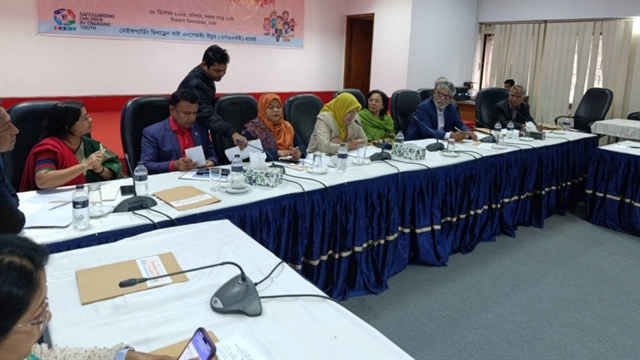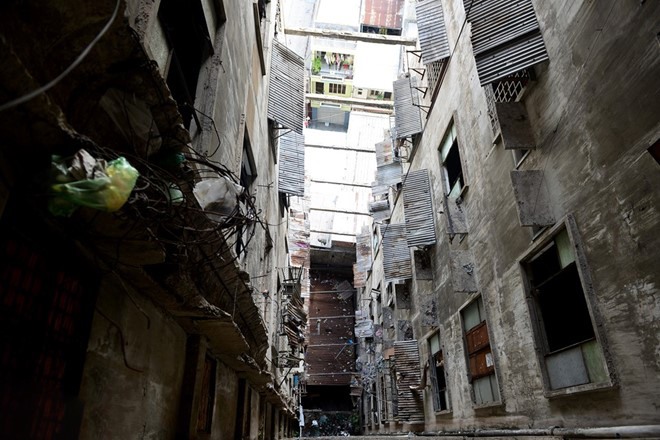 Opinion
Opinion

Hoàng Hải, deputy director of the State Agency for Construction Quality Inspection, under the Ministry of Construction talks to Kinh tế Việt Nam & Thế giới (Việt Nam & World Economic Affairs) about the need to conduct thorough inspections on the safety of old apartment buildings and houses.
" />
Hoàng Hải, deputy director of the State Agency for Construction Quality Inspection, under the Ministry of Construction talks to Kinh tế Việt Nam & Thế giới (Việt Nam & World Economic Affairs) about the need to conduct thorough inspections on the safety of old apartment buildings and houses.
 |
| Hoàng Hải, deputy director of the State Agency for Construction Quality Inspection, under the Ministry of Construction talks to Kinh tế Việt Nam & Thế giới (Việt Nam & World Economic Affairs) about the need to conduct thorough inspections on the safety of old apartment buildings and houses. — Photo news.zing.vn |
Hoàng Hải, deputy director of the State Agency for Construction Quality Inspection, under the Ministry of Construction talks to Kinh tế Việt Nam & Thế giới (Việt Nam & World Economic Affairs) about the need to conduct thorough inspections on the safety of old apartment buildings and houses.
What is the permitted support capacity for a multi-storey building in Việt Nam?
According to standard procedures issued by the Ministry of Construction, inspections and assessments of the allowable bearing pressure of any tall building are divided into two stages.
The first stage is to conduct a survey and produce an initial assessment of the building; the second stage is to conduct a second survey and come up with a detailed assessment.
In the first stage, both the survey and the assessment are based on the outside appearance of the building. Based on these initial results, the surveyors and assessors will then come up with three levels of allowable bearing pressure: normal; requires further inspections and detail assessments; requires a detailed survey and assessment. In addition, the building owner must take technical measures to strengthen the foundations, particularly in weak and dangerous areas.
In the second stage, detailed survey and assessment will be conducted in accordance with Vietnamese standard technical procedures. The results will then be divided into four levels: A, B, C and D, according to their measure of safety. If the building is graded D, residents have to move out and the building must be either dismantled or overhauled.
Should the code A, B, C and D be applied to old buildings in Việt Nam?
Yes. The code A, B, C and D must be applied to all buildings in our country.
Buildings, which are coded A, B and C are safe. But people living in D coded buildings must demand the owners take immediate measures to save their lives.
However, whether the building is graded A, B, C or D, owners have to adopt technical measures to ensure safety. Recently, Hà Nội authorities released a report saying that the city has 10 living quarters needing immediate renovation due to their seriously deteriorated status. They called on investors to rebuild these buildings at an estimated cost of VNĐ316 trillion (more than US$14 billion).
There are many such buildings in both Hà Nội and Hồ Chí Minh City. Does your agency have a road map for conducting appraisals?
Under the Prime Minister’s instructions, by late 2016 we must complete stage 1 and by the end of 2017, stage 2 must be completed.
To do this, we need to ask competent inspection consultancy companies to work together with us.
At the same time, Government management agencies should allocate adequate funding for these activities.
Objectivity is a very important factor in the appraisal work. What should be done to achieve this goal?
Not all appraisal reports have received unanimous approval from everyone. That’s why it is important to create a consensus of all those concerned before consultants or authorised agencies conduct their reviews. A very important principle must be for consultancy agency to follow all MOC procedures.
In case a building must be taken down immediately, all State management agencies and people’s committees must inform the affected residents and work out plans to temporarily resettle them elsewhere. — VNS




